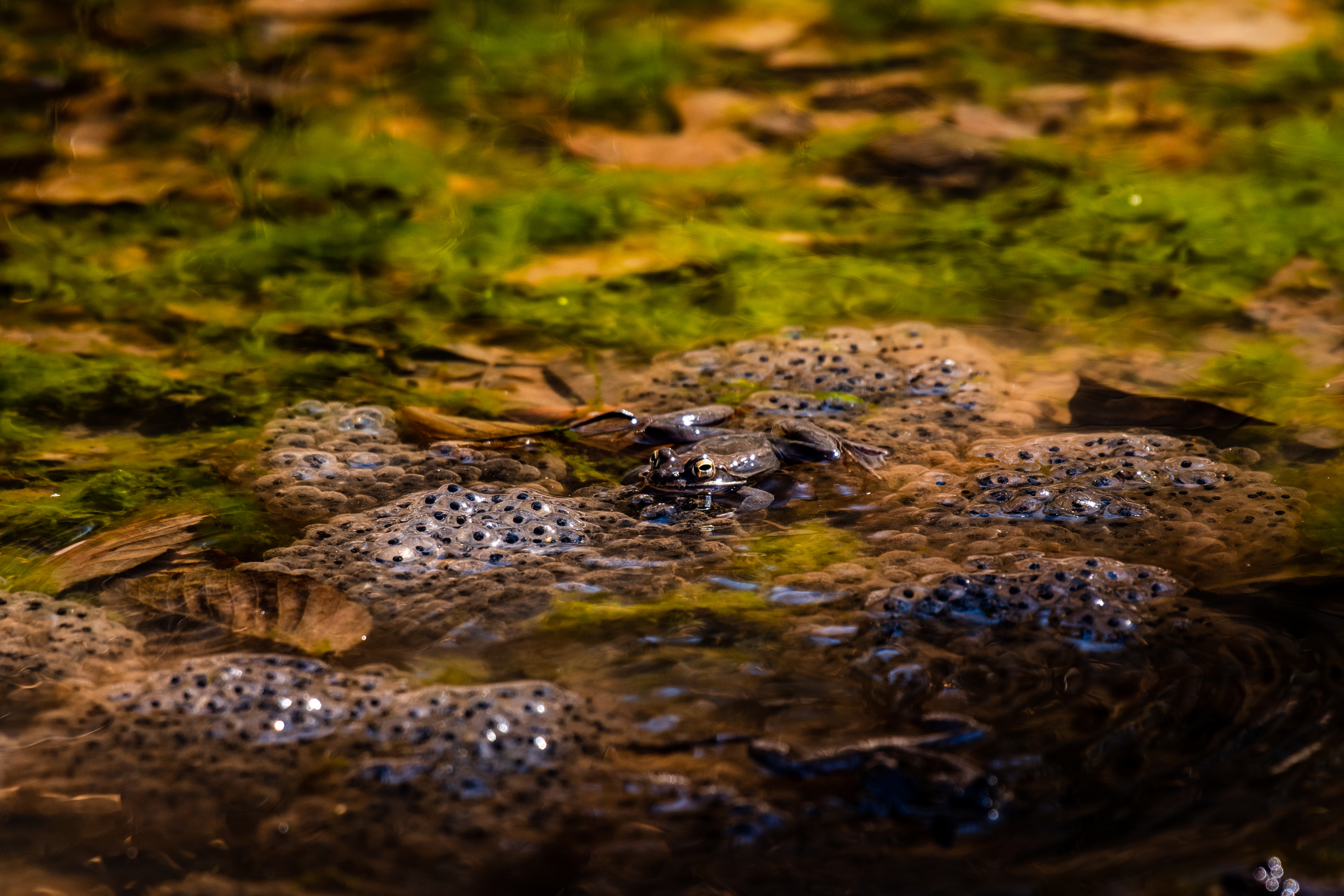Ranaviruses are a group of DNA viruses found around the world that can infect all classes of cold-blooded vertebrates. In North America, they can cause mass die-offs of amphibians and turtles; these outbreaks can be severe enough to cause local extinctions of susceptible species at affected sites.
In order to manage a disease, it is important to first know where the disease is located on the landscape. But detection of ranaviruses is tricky, because most tests require capturing animals and collecting samples from them to test for the presence of Ranavirus DNA. At best, these animal surveys are resource-intensive, and at worst they run the risk of missing signs of disease entirely. Ranavirus outbreaks are often seasonal; amphibian populations can crash with the loss of 90-100% of animals in just a few days. If surveys aren’t timed just right, managers may miss signs of an outbreak.
CWHL has previously explored one potential solution to this challenge: environmental DNA (eDNA), free DNA that can be captured in bulk environmental samples. Our previous work found that Ranavirus DNA can be detected in water samples collected from amphibian breeding pools, even in the absence of die-offs. (Read more about that study here: https://onlinelibrary.wiley.com/doi/full/10.1002/edn3.240.) This study showed that eDNA shows promise for improving surveillance for ranaviruses. However, some questions remain unanswered about the activity of the virus in the water.
When we get a positive result for Ranavirus eDNA in a water sample, the only thing this finding tells us with certainty is that Ranavirus DNA is present in the environment. We can’t know for sure if the virus is causing disease, is infecting animals, or if it is even intact virus capable of causing infections versus free-floating DNA fragments.
To address some of the limitations of using eDNA for ranavirus surveillance, we are exploring the potential of environmental RNA (eRNA). During infections, ranaviruses take over the machinery of host cells to make more copies of the virus. Throughout this process, Ranavirus DNA is briefly converted into RNA, which is then quickly broken down. We can use this short-term presence of RNA to better understand the status of ranaviruses in the environment; if we capture Ranavirus eRNA from water samples, we know there are active viral infections in animals in the sampled environment. We hope results of this study will help wildlife managers and conservation biologists learn more about the role that ranaviruses play in the health of managed amphibian and reptile populations.
This research is supported by the Atkinson Center for Sustainability Sustainable Biodiversity Fund.



